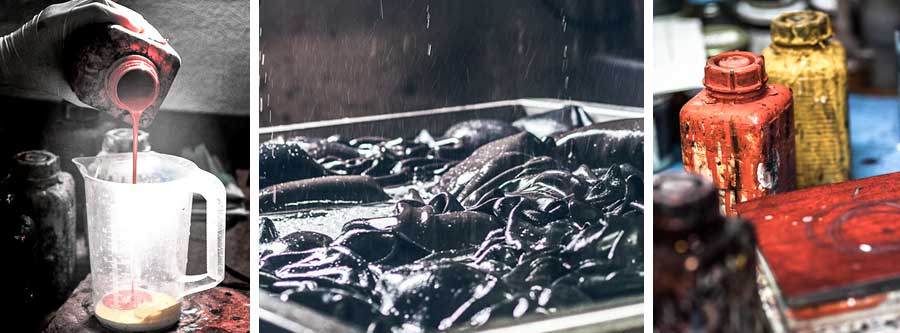HOW REACH PROTECTS YOU FROM HARMFUL LEATHERS
Depending on the tanning process several different kinds of chemical substances and tannins are used to turn hides into long-lasting, colorful, and beautiful leathers. Nowadays, these tanning agents are heavily regulated but that hasn’t always been the case. It took until the introduction of REACH for a unified regulation to be formed. All of our partner tanneries have been in compliance with the framework for many years to ensure that no harmful substances are used during the tanning process. Yet, the tanning industry is only one of many industries which have been affected by the Regulation.
What is REACH?
REACH is a regulation which came into force in Europe on June 1st, 2007 and is an acronym for Registration, Evaluation, Authorization and Restriction of Chemicals. It is a piece of legislation with vast effects on all companies whose supply chain runs through Europe in any way (i.e. exports from Europe, imports into Europe).
The Goal
Overall, the idea behind REACH was to streamline and enhance the existing legislative framework for chemicals by enforcing stricter raw material transparency requirements. Thereby, the dissemination of all the information necessary to use chemicals safely and the adherence to such guidelines should be carried out and enforced by one governing body. Furthermore, the Regulation aimed to free the movement of chemicals within the domestic market in order to promote competitiveness and innovation.

Compliance with REACH
These new industry-wide guidelines posed a significant challenge to manufacturing and distribution companies which had to implement expensive systems to measure, control and manage chemicals in their products and supply chains. According to the EU Commission this transition cost several billion Euros. Due to these financial and logistical obstacles, many critics scorned the Regulation to be prohibitive to industrial growth and worldwide competitiveness. However, creative minds rose to the occasion and developed software which facilitated the compliance with REACH. So, in retrospective the Regulation has been a success resulting in safer products which are produced in more environmentally-friendly processes.
SVHC vs. SIN
We won’t go into too much detail, as this is just a broad overview, but REACH differentiates between SCHC and SIN substances. SVHC stands for Substances of Very High Concern which basically means “highly toxic stuff”; familiar substances include lead, arsenic, and coal tar. Since these substances can have serious and irreversible effects on humans and the environment it is essential to regulate them.
Before a substance makes the SVHC list it is usually put on the SIN list. The SIN list – as the name suggests – includes a number of substances which manufacturers should avoid using. The SIN list came into being because companies wanted to know if the chosen replacements for the SVHC banned substances would turn up banned in the future as well. In other words, the SIN list gave companies a long-term roadmap for approved input-materials. Any substance not included in either list is considered safe for production for many years.
Regulations in the US
The American equivalent to REACH is the Environmental Protection Agency (EPA) which has the power to regulate and even ban the manufacture, use and distribution of new or existing chemicals under the Federal Toxic Substance Control Act (TSCA). Both Regulations share the same goal to protect the people and the environment but can have different procedures in place to do so.